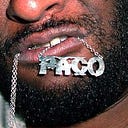Dezmona,
First off, I’d like to say that if I failed at anything, it was in my expecting wannabe critics to actually read my work before putting fingers to keys in a half-cocked effort to critique its accuracy. You clearly haven’t done that, but let’s circle back to that glaring fact a bit later, ok?
Secondly, I may have indeed purposely failed in not just spelling out in detail how Asia Minor (modern day Turkey), as well as mainland Greece and the Mediterranean islands in-between were all once inhabited by non-Greek speaking/pre-Hellenic peoples (read: non-Europeans). But I laid a few breadcrumbs for intellectually curious readers to follow.
The arrival of the folks of whom I speak took place during the Neolithic or New Stone Age, a few thousands years *before* the arrival of the Hellenes or Indo-European speaking Greeks in the 9th century BC. Those later Greeks described them as the autochthonous or aboriginal inhabitants of the lands they later came to colonize.
The Pelasgians, as they were called by the Greeks, were perhaps the best-known of these pre-Greek peoples. But there is still *much* that we don’t know about them. What we do know – unequivocally, though – is that they were NOT Indo-Europeans, because their language, unlike Greek, wasn’t part of the Indo-European language family.
In his Histories, the so-called Greek “father of history, Herodotus mentions the Pelasgians being one of those pre-Hellenic peoples who, by his time, had been largely submerged and assimilated. But there were a great many at that time who still spoke their ancient, “barbarian” language.
The modern study of linguistics supports this little known fact about the Greek world being inhabited *before* the later arrival of the Hellas/Greeks. This is revealed by way of the place names used during the time of Classical Greece that have *no* Indo-European etymology. Place names like Athēnai (Athens), Mycēnai (Mycene), Messēnē, Kyllēnē, Cyrene, Mytilene, etc.
The same also holds true for the names of several so-called “Greek” gods, who have no parallels in the mythologies of other Indo-European populations. Among these are the pre-Greek goddess Athena, as well as Apollo, Dionysus, Artemis, and Aphrodite––whose origins suggest pre-Greek/non-Indo-European roots in Western Asia (Asia Minor).
Let us also not fail to mention how other populations living in Asia Minor during the age of classical Greece were actually non-Greek speaking peoples. This includes the Lydians and the Carians.
So yeah, I really have to disagree, because putting a little circle around the word ASIA on the map I used DOES indeed eradicate “the original Hellenic history of the land before the Turks." Because this region had several thousand years of human history that pre-dates your vaunted Hellens. But there’s only so much info I can cram into an essay, for fear if losing the reader.
I mean, you yourself didn’t even read the whole thing...
The proof of this is apparent in your saying how you didn’t understand what the Moors of North Africa had to do with the legend of St. Nicholas. Why not? I explained this quite explicitly in the section where I detail the history of Zwarte Piet/Black Peter, the sidekick of St. Nicholas in various European countries.
If you'd bothered to read the entire essay, you could have saved yourself the embarrassment of having someone point out how you “purposely failed” to read a work that you had the audacity to try and critique, Dezmona. Even worse, the audacity to suggest that I've failed to report history accurately.
It all calls to mind one of the...sharper insights given to us by Neil Degrasse Tyson. This brilliant astrophysicist famously said that 'one of the great challenges in this world is knowing enough about a subject to think you're right, but not enough about the subject to know you're wrong.
Your note to me is shining example of that.
You know enough about the ancient Greek world to think that you're right, but not enough about pre-historic Greece to know that you're wrong.
